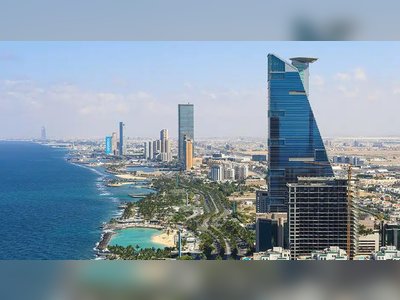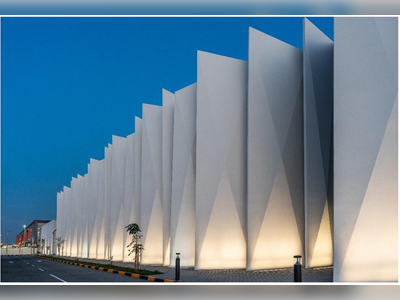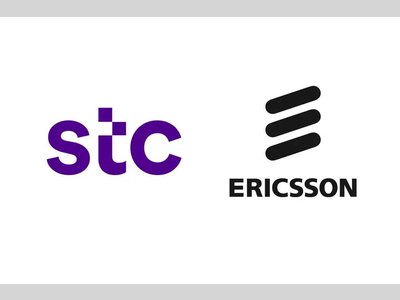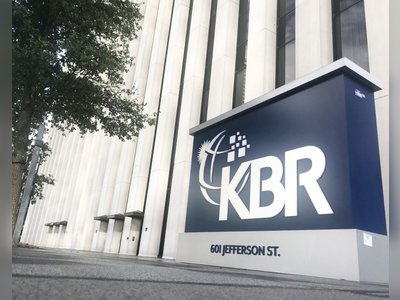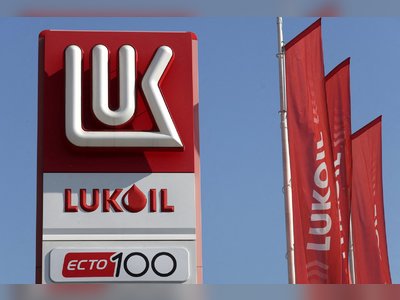Saudi Arabia Inaugurates the World’s First 3D-Printed Mosque
Jeddah, Saudi Arabia - In a pioneering achievement, the world’s first mosque constructed using 3D printing technology has opened its doors to worshippers.
Named after the late Abdulaziz Abdullah Sharbatly, the mosque spans 5600 square meters in the city of Jeddah. This innovative project was initiated by Saudi businesswoman Wajnat Mohammed Abdul Wahid as a tribute to her late husband, marking a significant step forward in the kingdom’s embrace of cutting-edge building technologies.
The construction of the mosque, a process that took approximately six months, was carried out using four industrial printers from the Chinese company Guanli. The Saudi press quoted Abdul Wahid stating her motivation was to contribute to bringing this advanced technology to Saudi Arabia, aiming to be among the first countries to adopt it for constructing a mosque with 3D printing technology.
Prior Experiences in Saudi Arabia with 3D Printing
The mosque is not the first structure in Saudi Arabia to be built using 3D printing. Before the mosque, the first industrial concrete building with 3D printing technology was erected in the Al-Hawiyah area of Taif, Mecca Province, in March of the previous year. This building reached a height of 3.85 meters and covered an area of 63 square meters.
The construction was completed in record time thanks to the printing speed of 100 millimeters per second, utilizing a stationary printer that can operate over an area of 7 meters in length, 4 meters in width, and 4 meters in height. Furthermore, the start of 2022 saw the construction of the first house in Riyadh using 3D printing technology on land owned by the Ministry of Housing, west of King Khalid International Airport.
3D Printing in Construction: A Revolution
The technology of 3D printing in construction has rapidly evolved, offering revolutionary solutions for sustainable building. It utilizes various materials such as concrete, plastic, and clay to print walls and roofs, significantly reducing costs and construction time.
This method is notably faster than traditional construction techniques, aiding in meeting the increasing demand for housing. Some studies estimate that building homes with 3D printing could be up to 30% cheaper than traditional construction costs. Besides being more sustainable, this technology allows for custom designs, providing homeowners with more options. However, the high cost of 3D printers and the ongoing development of some of the materials used pose challenges to its widespread adoption and raise concerns about safety and durability.
The construction of the mosque, a process that took approximately six months, was carried out using four industrial printers from the Chinese company Guanli. The Saudi press quoted Abdul Wahid stating her motivation was to contribute to bringing this advanced technology to Saudi Arabia, aiming to be among the first countries to adopt it for constructing a mosque with 3D printing technology.
Prior Experiences in Saudi Arabia with 3D Printing
The mosque is not the first structure in Saudi Arabia to be built using 3D printing. Before the mosque, the first industrial concrete building with 3D printing technology was erected in the Al-Hawiyah area of Taif, Mecca Province, in March of the previous year. This building reached a height of 3.85 meters and covered an area of 63 square meters.
The construction was completed in record time thanks to the printing speed of 100 millimeters per second, utilizing a stationary printer that can operate over an area of 7 meters in length, 4 meters in width, and 4 meters in height. Furthermore, the start of 2022 saw the construction of the first house in Riyadh using 3D printing technology on land owned by the Ministry of Housing, west of King Khalid International Airport.
3D Printing in Construction: A Revolution
The technology of 3D printing in construction has rapidly evolved, offering revolutionary solutions for sustainable building. It utilizes various materials such as concrete, plastic, and clay to print walls and roofs, significantly reducing costs and construction time.
This method is notably faster than traditional construction techniques, aiding in meeting the increasing demand for housing. Some studies estimate that building homes with 3D printing could be up to 30% cheaper than traditional construction costs. Besides being more sustainable, this technology allows for custom designs, providing homeowners with more options. However, the high cost of 3D printers and the ongoing development of some of the materials used pose challenges to its widespread adoption and raise concerns about safety and durability.
Translation:
Translated by AI







